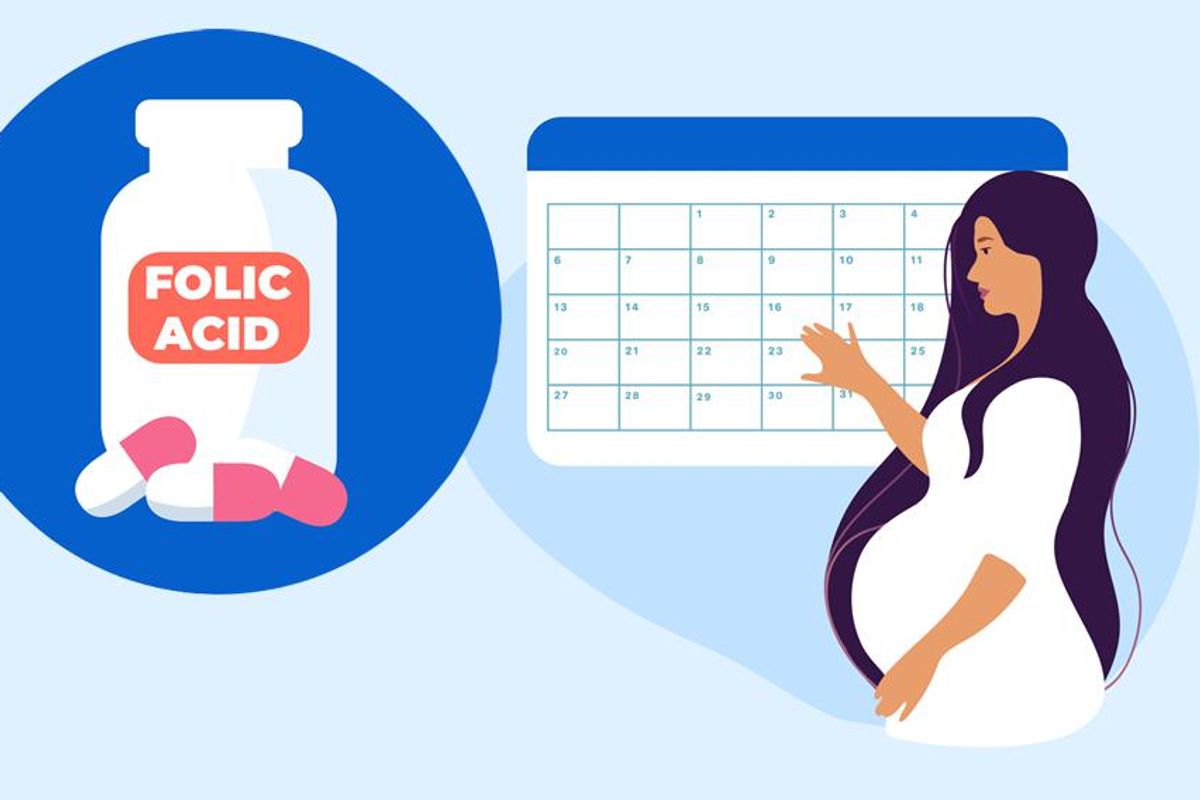Designed by Megan Schofield
January is National Birth Defects Awareness Month.
What is folic acid?
- Folic acid is the synthetic (man-made) form of folate, a naturally occurring B vitamin (vitamin B9).
- Folic acid helps cells grow and work properly and is important for the formation of red blood cells.
- During early pregnancy, folic acid is key to development of the embryo and fetus.
How does folic acid help prevent birth defects?
Folic acid helps prevent neural tube defects (NTDs), which are serious defects of the baby’s brain and spine. The two most common types of NTD are:
- Anencephaly, where parts of the baby’s brain and skull don’t form properly
- Spina bifida, where the baby’s spine doesn’t form as it should
Who should take folic acid?
The CDC urges all women of reproductive age get 400 micrograms of folic acid every day, whether they plan to become pregnant or not. This is because:
- About 50% of pregnancies in the U.S. are unplanned, and NTDs happen very early in pregnancy (3-4 weeks after conception) — before most women know they’re pregnant.
- It can take about 20 weeks of folic acid supplementation to reach the level needed to prevent NTDs, so supplementation should begin at least 5-6 months prior to conception.
How much folic acid do pregnant women need?
- During pregnancy, women need 600 mcg of folic acid per day. Since it can be hard to get this amount from food alone, experts suggest taking a prenatal vitamin with 400 mcg of folic acid every day.
- Pregnant women should continue with folic acid at least through the first trimester (3 months) of pregnancy. It is safe to keep taking folic acid throughout your pregnancy.
Food sources of folic acid
- Fortified foods (usually labeled “enriched”), such as some types of flour, bread, pasta, rice and cereal
- Spinach and other dark, leafy greens
- Broccoli
- Cooked lentils
- White beans
- Asparagus
- Oranges
- Avocados
- Nuts and seeds
Did you know? Since the United States began adding folic acid to enriched grain products like cereal in 1998, the number of pregnancies affected by NTDs has gone down 28%.
What about supplements?
The shift toward eating whole grains instead of fortified grain products, along with the rising popularity of grain-free and low-carb diets, mean many women may not be getting enough folic acid from food.
Taking a multivitamin or other supplement that contains folic acid can help you make sure you’re getting the recommended amount (400 mcg) every day.
- Pregnancy - HealthyWomen ›
- Top 6 Foods to Eat During Pregnancy - HealthyWomen ›
- 1 Week Pregnant: Preparing Your Body for Pregnancy ... ›
- 5 Ways to Prepare for Pregnancy - HealthyWomen ›








